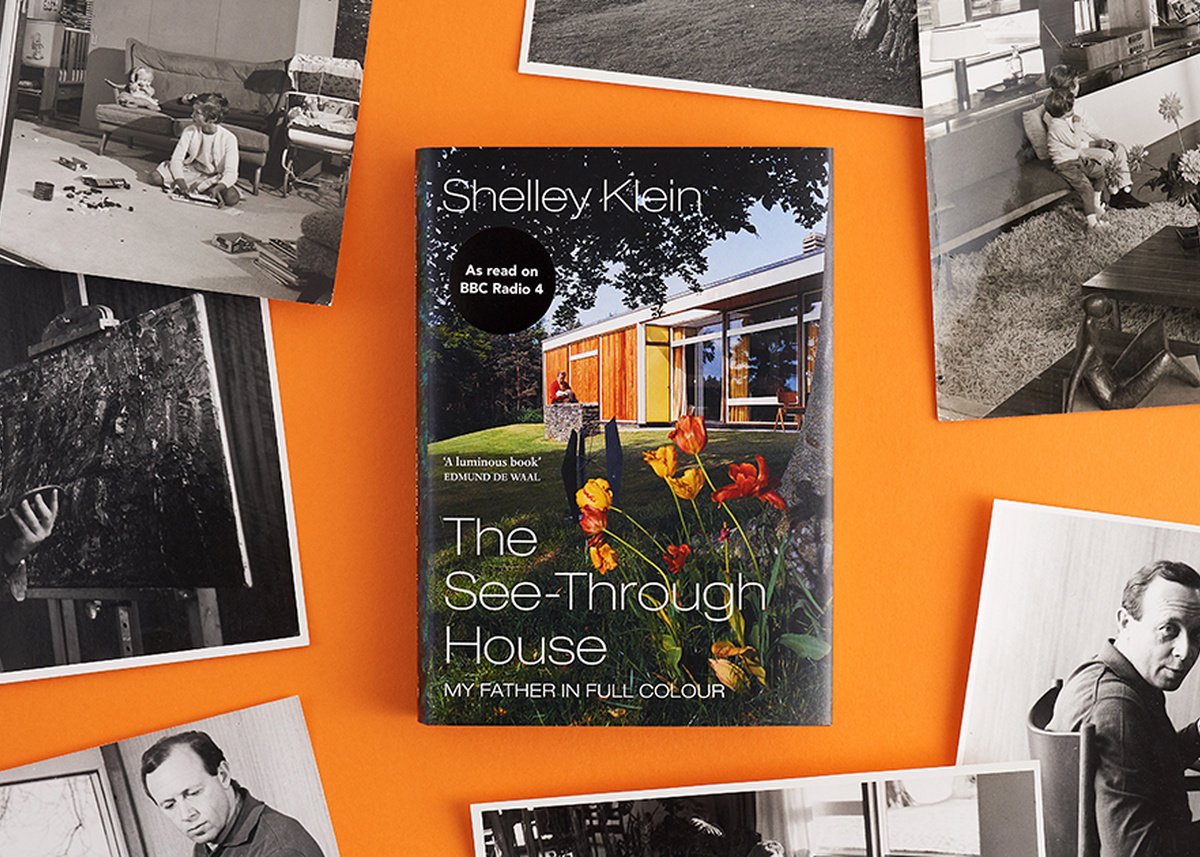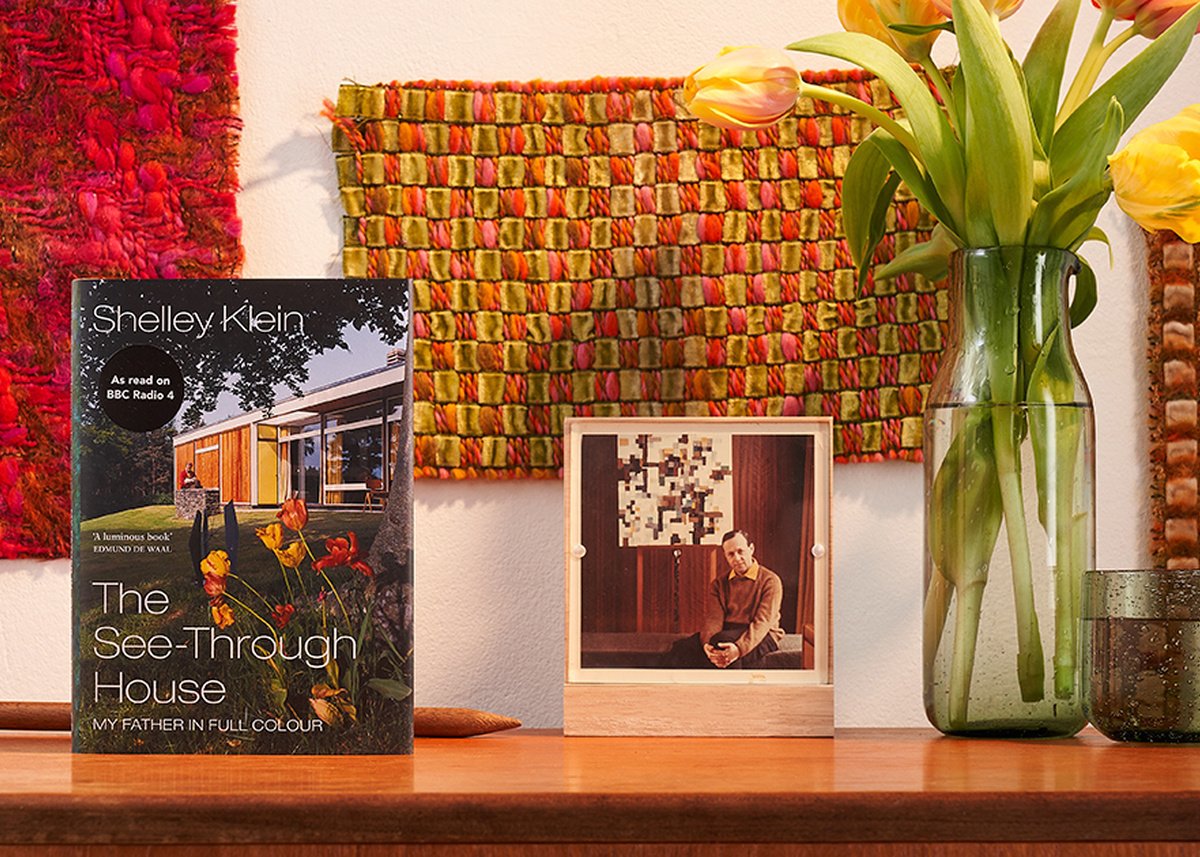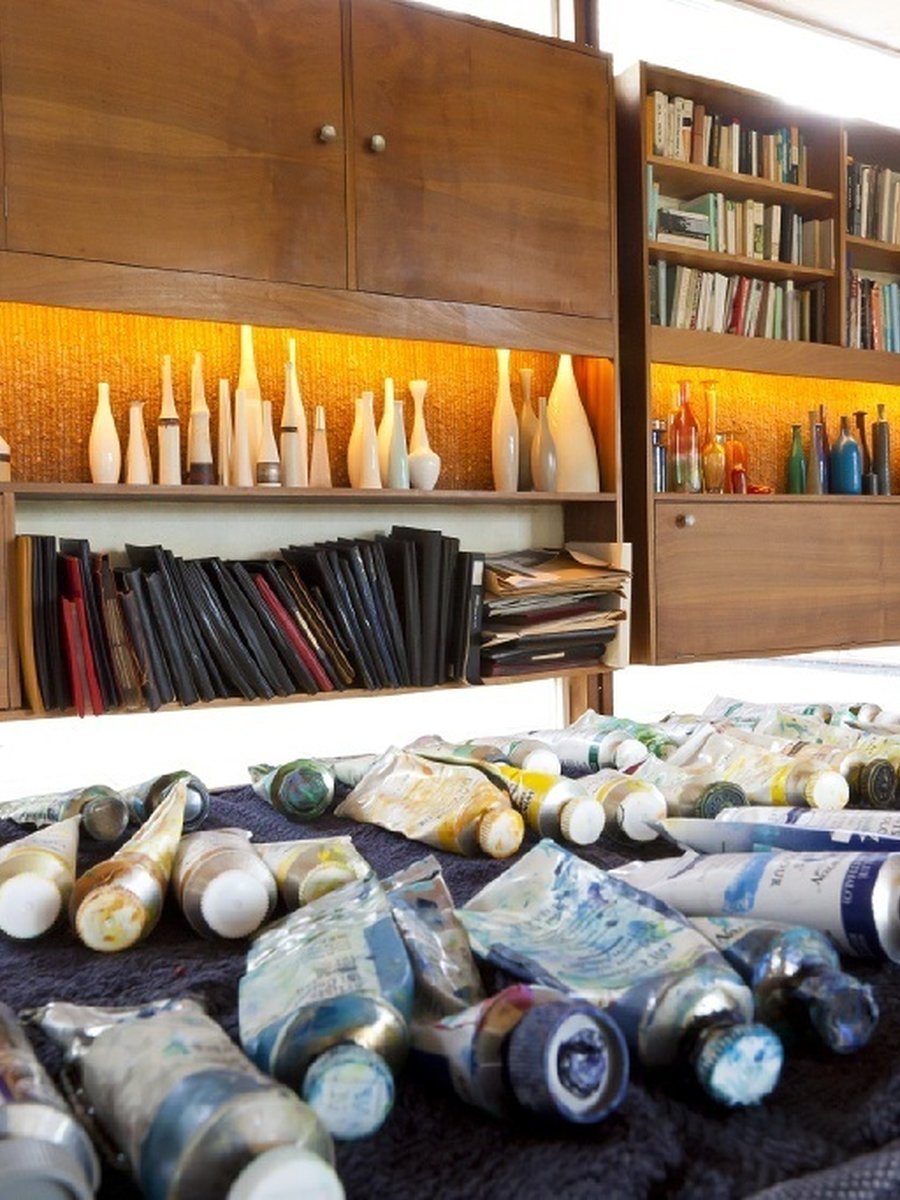The See-Through House by Shelley Klein
A book about saying goodbye to a much-loved family home, High Sunderland.
Lisa Mason is Assistant Curator in Modern & Contemporary Design at the National Museum of Scotland, and a Trustee of the Bernat Klein Foundation. Here she reflects on the recently published book by Shelley Klein.
Approaching High Sunderland along its birch lined driveway, takes your breath away. The house is an unforgettable presence, simultaneously harmonising and reflecting the surrounding landscape. An open plan modernist structure that appears to have materialised in the Scottish borders, is the result of two individuals with singular and uncompromising vision: the architect Peter Womersley and textile designer Bernat Klein.
Bernat and Margaret Klein commissioned Womersley to design High Sunderland in circa 1955. At this time Klein’s textile business, Colourcraft Ltd., was on an upward trajectory and he had recently bought a plot of land between Peebles and Selkirk. He approached the young British architect Peter Womersley to design his home after viewing Farnley Hey, which Womersley had designed for his brother as a wedding present. High Sunderland was Womersley’s first professional commission and sparked a life-long friendship between them.
High Sunderland, NMS Archive
This family home takes centre stage in the book by Shelley Klein. Taking the rooms of the house as chapter headings, Shelley invites us to explore High Sunderland as a family home, interweaving the story of her remarkable father throughout the narrative; his journey from an orthodox Jewish upbringing in Serbia, to his international design career. It is also a poignant meditation in the ways in which objects, places, and spaces shape the course of our lives.
Shelley observes: Over the next fifty-six years Beri was to become so attached to High Sunderland it was almost impossible – to my mind, at least – to separate the two things out from each other.
My father was the house. The house was my father.
Objects, places and spaces shape the course of our lives
Indeed the house can be viewed as an extension of Klein’s philosophy, a place for him to realise his ideas about how design can make a positive impact on everyday life. In his 1976 publication 'Design Matters' Klein stated:
Good design defends dignity just as surely as bad design destroys it. To design means to care about people as individuals. Or, perhaps, it means simply to care.
It is useful to also consider the concept of the 'gesamtkunstwerk' or total work of art alongside Klein’s own observations; High Sunderland was the result of a fusion between art, architecture and design, where no detail was left to chance. The home was furnished with Klein’s textiles and his oil paintings hung on its walls. The contents of the house, from furniture to cutlery, were also carefully selected. The house was simultaneously a platform for displaying Klein’s work and a source of inspiration.
Colour, Oils & Inspiration, NMS Archive
High Sunderland is surrounded by the rolling borders landscape and its colours and textures found their way into Klein’s textiles. Nature provided a rich source of inspiration for many modernist designers working in post-war Britain, albeit in highly individual expressions, from Tibor Reich’s graphic printed textiles, to Lucienne Day’s wiry organic forms.
Examples of Klein’s woven textiles, NMS Archive
Klein’s life, work, and home were linked in myriad ways. By commissioning High Sunderland, he was making a bold statement to the world about who he was and what he believed in. The See-Through House tells Klein’s story from a new perspective, and through the eyes of his equally remarkable daughter, Shelley.
“Memory conceals itself in the quietest moments ... the smell of turpentine, the taste of Victoria plums, a pile of orange peel, a freshly ploughed field.”
Shelley Klein, 2020
More information can be found here:
Waterstones
@vintagebooks








